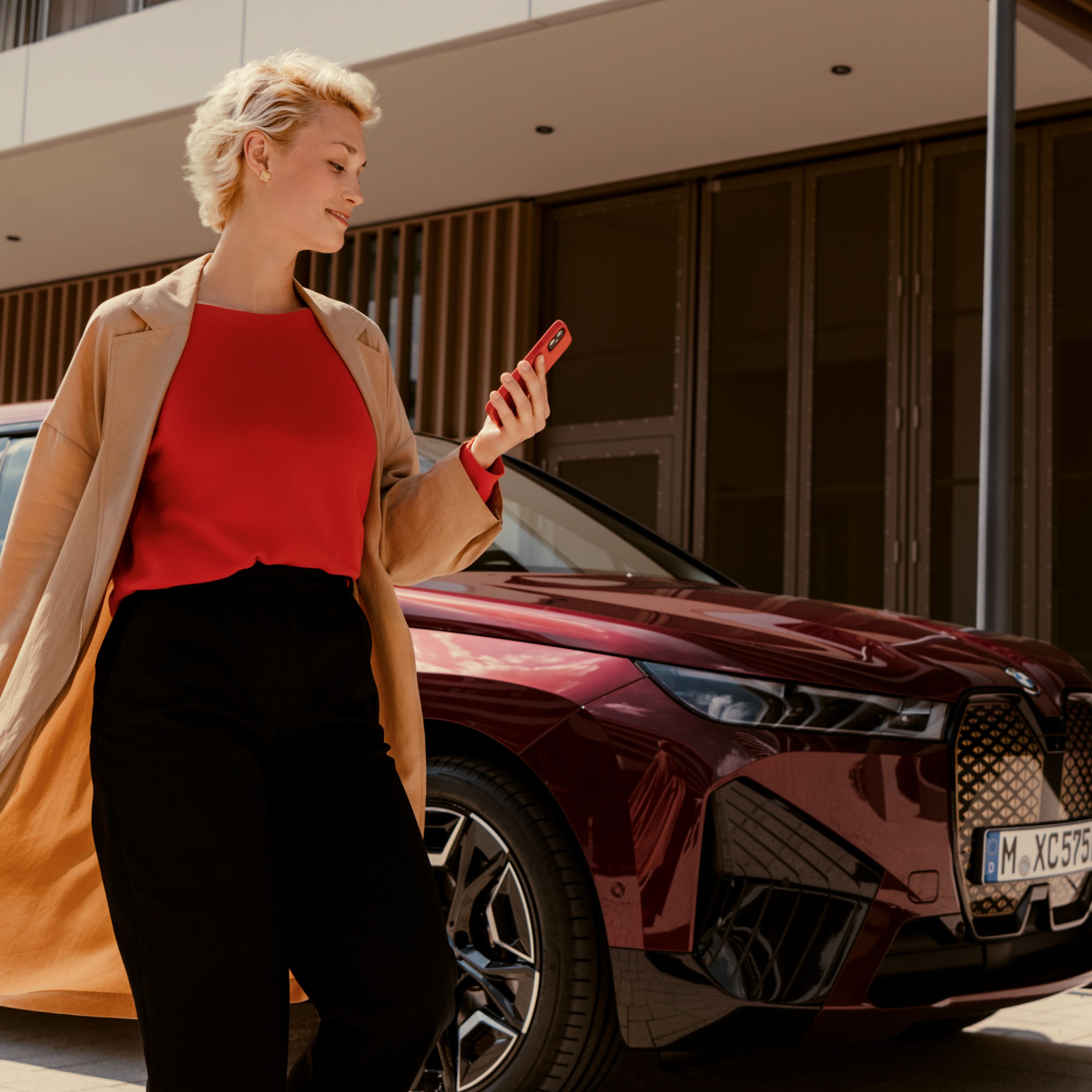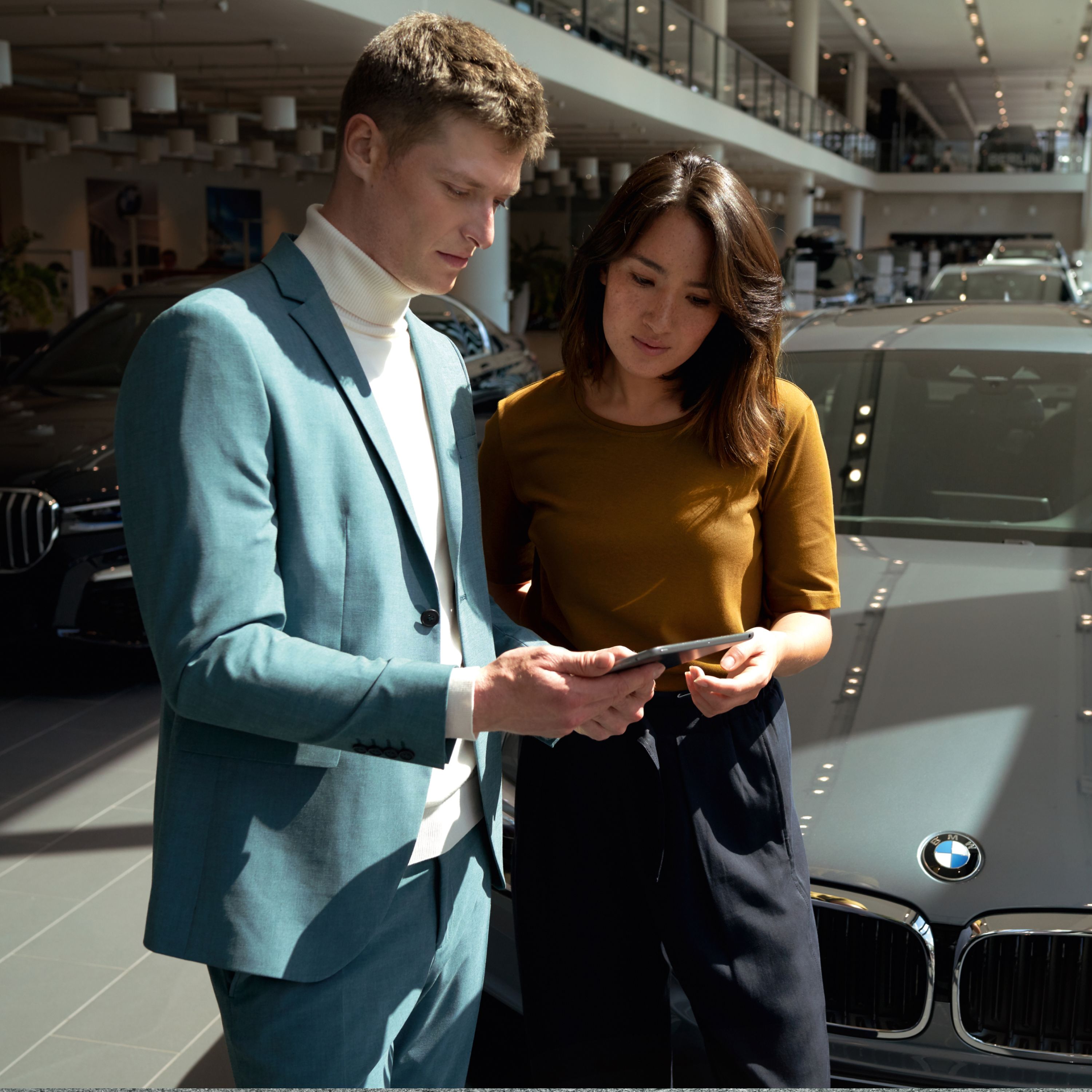THE RANGE OF ELECTRIC CARS.
CONVENIENT EVERYDAY DRIVING.
BMW iX3: Energy consumption, combined WLTP in kWh/100 km[1]: 18.0–17.6; Electric range, WLTP in km[2]: 461–471
Far. Further. Electric range. That's what determines how versatile an electric car is for everyday driving. BMW electric cars have high battery capacities, thanks to the use of innovative technologies. They are therefore both sustainable and high-performance. For instance, the BMW i7 eDrive50 and i7 xDrive60 as well as the BMW iX xDrive50 achieve an all-electric range of over 600 km according to the WLTP cycle. To charge them, one of Europe's largest and constantly growing charging networks is at your disposal. Clever technologies on board further optimise the car's range. Charge-optimised routes automatically take over charge planning on longer journeys.
ARRIVE RELAXED AT YOUR DESTINATION.

YOUR VERY OWN IN-VEHICLE ROUTE PLANNER.
The My BMW app takes over charging stop and route planning before longer journeys. Just enter your destination and the charge-optimised route planner will determine the best route including time-optimised charging stops for your electric car along the way. As a result, you'll always know how much time you need to factor in for a long journey and can set off stress-free with peace of mind. Even without your own BMW, the demo version gives you an idea of the features of the My BMW app. Simply download the app, log on and try it out.

ALWAYS KEEP AN EYE ON THE RANGE.
See at a glance how far you can still travel: a blue circle around your vehicle's actual location displays the current range as a radius on the map. This helps you to simply and effortlessly estimate how far you can currently travel without a charging stop.

HOW TO INCREASE YOUR RANGE. HINTS AND IDEAS FOR ELECTRIC CARS.
You can do a number of things to maximise the range of your electric car. An anticipatory driving style is important, in particular when driving on motorways. Firstly, drive in an anticipatory manner on motorways. Preferably, drive at between 120 and 150 km/h on longer journeys. Avoid heavy braking. Simply lift your foot off the "electric pedal", that is, the accelerator, or apply moderate pressure to the brake. Cool or heat your electric car while it's still charging. And always use the BMW Efficient Mode.
FOR CUSTOMERS BY CUSTOMERS: ELECTROMOBILITY IN EVERYDAY LIFE.
"Sometimes it's even easier than driving a combustion engine."
Watch the video to find out how our customers made home charging their own. And how convenient charging on longer journeys can be and the new opportunities it offers.

MAXIMUM RANGE WITH MINIMUM EFFORT.
How to travel further. Efficient Mode helpfully provides you with information about how to drive more efficiently. Have a look at the display: the power display has a blue background when you're driving efficiently. But it turns grey if you drive inefficiently. However, should the remaining range start to look marginal, you can enable MAX RANGE mode and increase the remaining range by up to 20% with further efficiency measures.[1] And you can also get a rough estimate of your current range from the coloured circle on the map in the My BMW app.
[1] The achievable additional range depends on your driving style and the environmental conditions.
ALL ABOUT ELECTROMOBILITY.
FREQUENTLY ASKED QUESTIONS.
MORE INFORMATION.
Consumption and CO2 emissions.
BMW iX3: Energy consumption, combined WLTP in kWh/100 km[1]: 18.0–17.6; Electric range, WLTP in km[2]: 461–471
[1] Official data for fuel consumption, CO2 emissions, power consumption and electric range was determined in accordance with the prescribed measuring procedure and corresponds to European Regulation (EC) 715/2007 in the applicable version. For ranges, data determined as per WLTP takes into account any optional equipment (available on the German market in this case). For vehicles that have been newly type approved since 1 January 2021, only the official data according to WLTP exists. In addition, NEDC values are deleted from the certificates of conformity as of 1 January 2023 by EC regulation 2022/195. For more information about NEDC and WLTP measuring procedures visit www.bmw.com/wltp
Further information about fuel consumption and official model-specific CO2 emissions of new passenger cars can be found in the "Guideline for fuel consumption, CO2 emissions and electric power consumption for new passenger cars", available free of charge at all points of sale, at the Deutsche Automobil Treuhand GmbH (DAT), Hellmuth-Hirth-Str. 1, 73760 Ostfildern-Scharnhausen, Germany, and under https://www.dat.de/co2/
[2] Range depends on various factors, in particular: individual driving style, route characteristics, outside temperature, heating/air conditioning, pre-conditioning.








